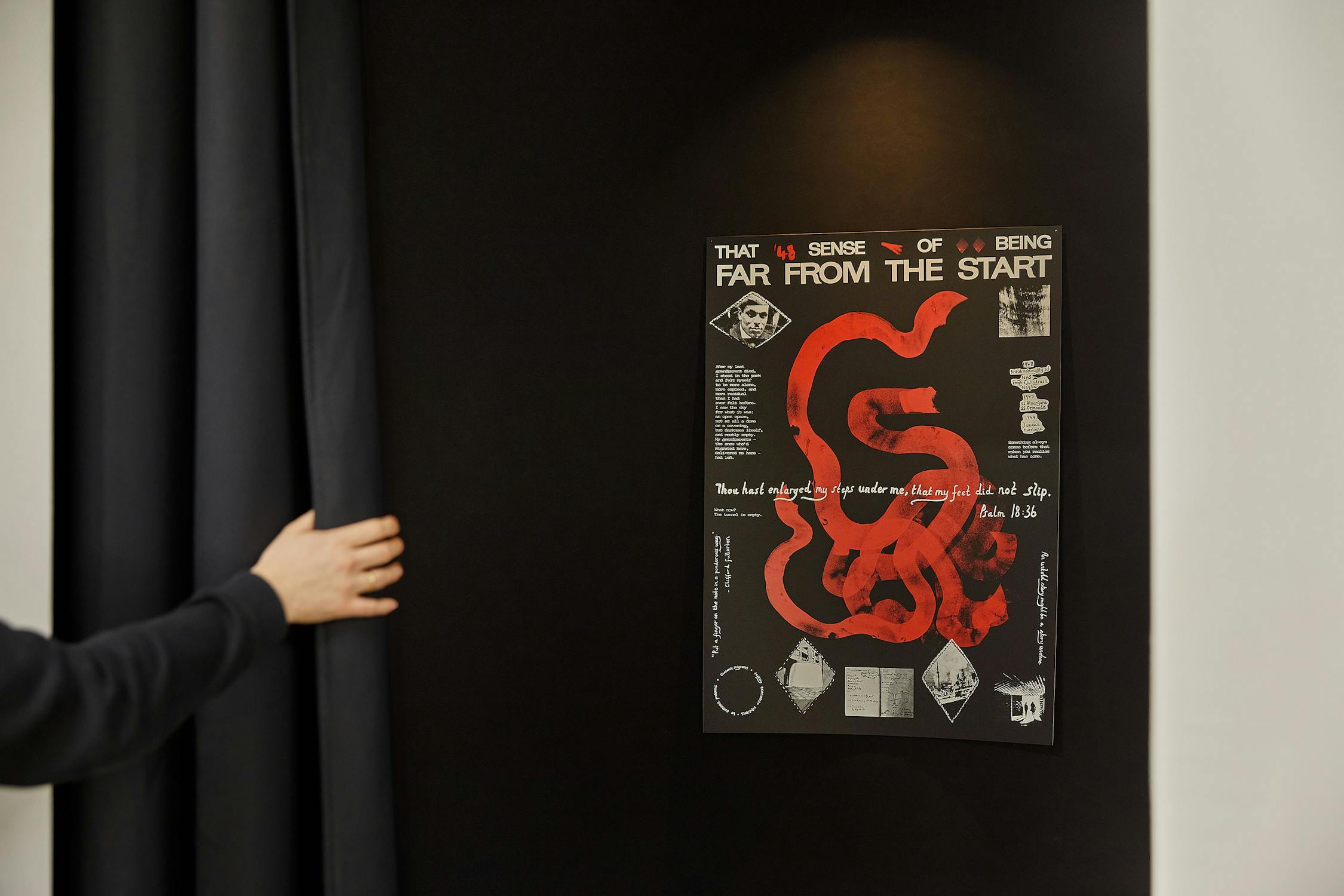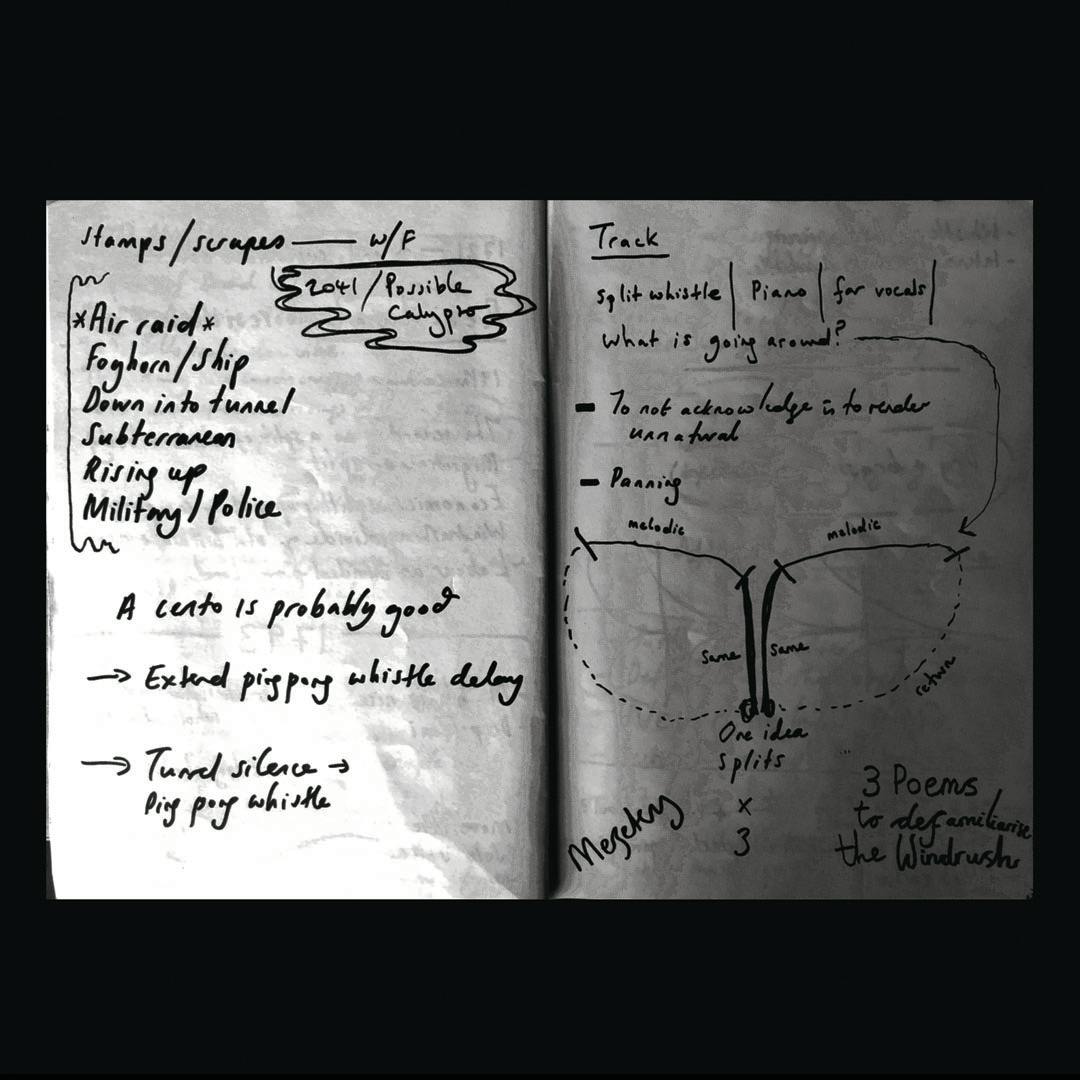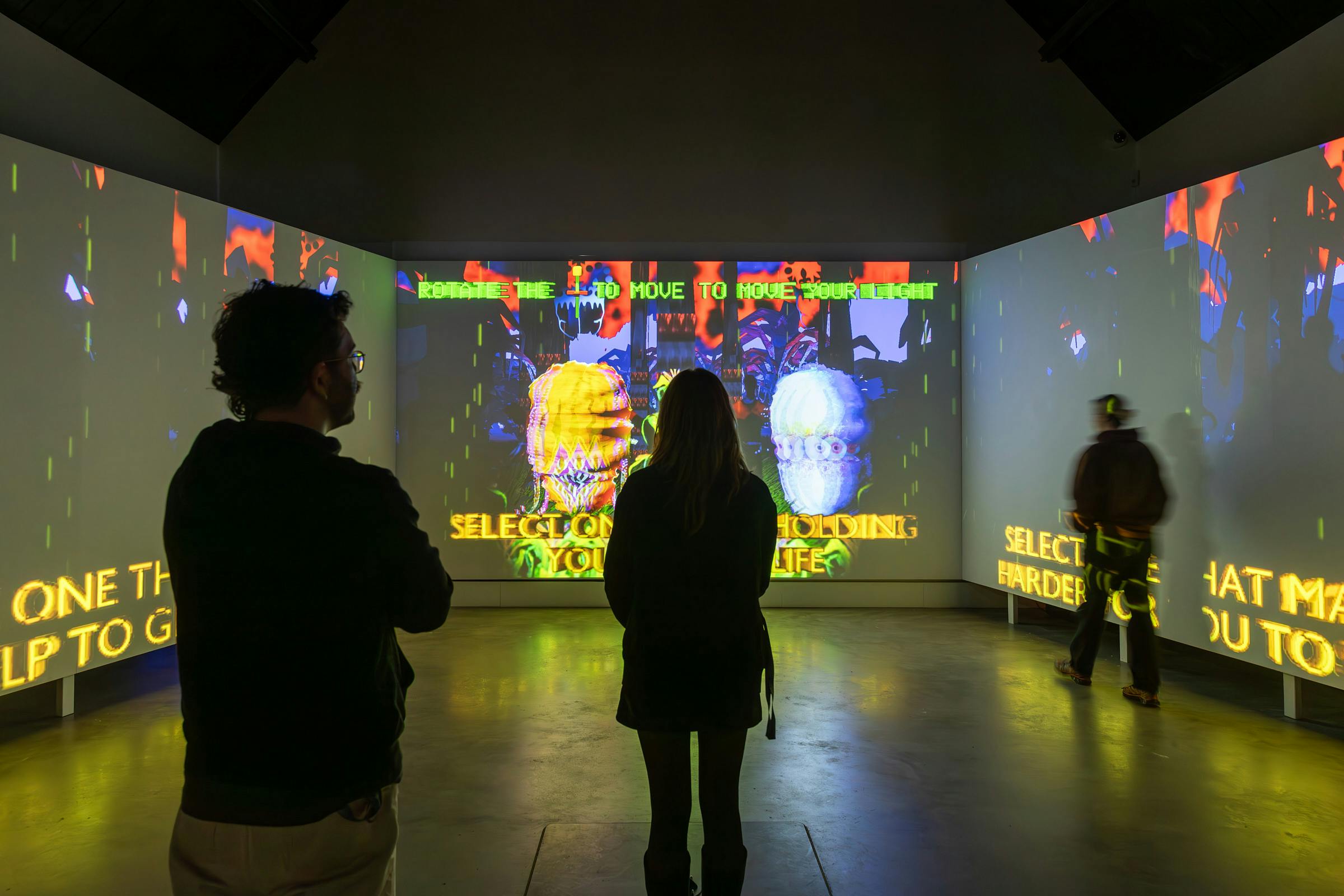Far from the Start was an installation and sound work by Jay Bernard. Stemming from a combination of research and personal experience, Bernard responded to the Clapham South Deep Level Shelter as a point of diffusion after the arrival of the HMT Empire Windrush in 1948.
“Did the story start on land or sea? In the longing or the calling? In terrain or in name? Did it begin in the tunnels and radiate upwards and outwards? Was it always, somehow, underground?"
The Windrush narrative has become a unified story of early post-war mass migration. In this work, the deep-level shelter became the opposite: a site of dispersal, alternatives and forgotten details hidden behind the familiar narrative.
Opened to the public in July 1944, Clapham South deep-level shelter was used by people seeking refuge during the Second World War and, later, by visitors to the Festival of Britain. In June 1948, due to a lack of temporary housing, the disused shelter housed 236 Caribbean people who had newly arrived on the Windrush following the Second World War. Conditions were basic, cramped and noisy in the windowless bunker. Fifteen storeys underground, it was a site of contradictory political gestures: fear from politicians about “coloured immigration” and a practical, warm and official welcome that became a sincere effort to find jobs and accommodation. The shelter’s miles-long subterranean passageways remain today and are a testament to the fascinating stories of those sheltered there.
Far from the Start responded simultaneously to the shelter’s space and the history that has passed through it. In distilling the shelter’s distinct ambient and textural qualities, this atmospheric installation brings a now-disused public landmark – and the people who stayed there – above ground for the first time, gesturing to the stories behind established narratives.
Bernard’s project developed over a series of visits to the shelter, the National Archives and Black Cultural Archives and Tilbury Docks in Essex, where the HMT Windrush arrived. The artist’s exhibited 45-minute sound installation, partially recorded within these historic sites, incorporated various instruments, including gongs, bells, drums, a euphonium and Bernard’s own voice, as well as air raid sirens and the constant roar of the London underground.
Composed of three movements, the piece begins with a spoken narrative addressing the question of how we understand ourselves and find political direction in the post-Windrush moment. The second part is an instrumental, subconscious flip-side to that question. The third presents a series of direct recordings from the deep-level shelter.
"Nevertheless the question arises of how your position shifts in a foreign land, when the generation above you dies. The question arises of what it means to be residual, at the end of a story, to be further from the start. For that position to increase with every death."
Bernard’s work positions the Windrush as a historical framing that served a particular purpose. As that generation disappears, and in the wake of the Windrush scandal, what is left of the political terrain once shaped by those patterns of migration?
Far from the Start is composed of 3 movements and is 45 minutes in duration. Two of the movements presented in Far from the Start were pressed and released as limited edition vinyl and distributed to archives, libraries, and charitable organisations across the UK.





